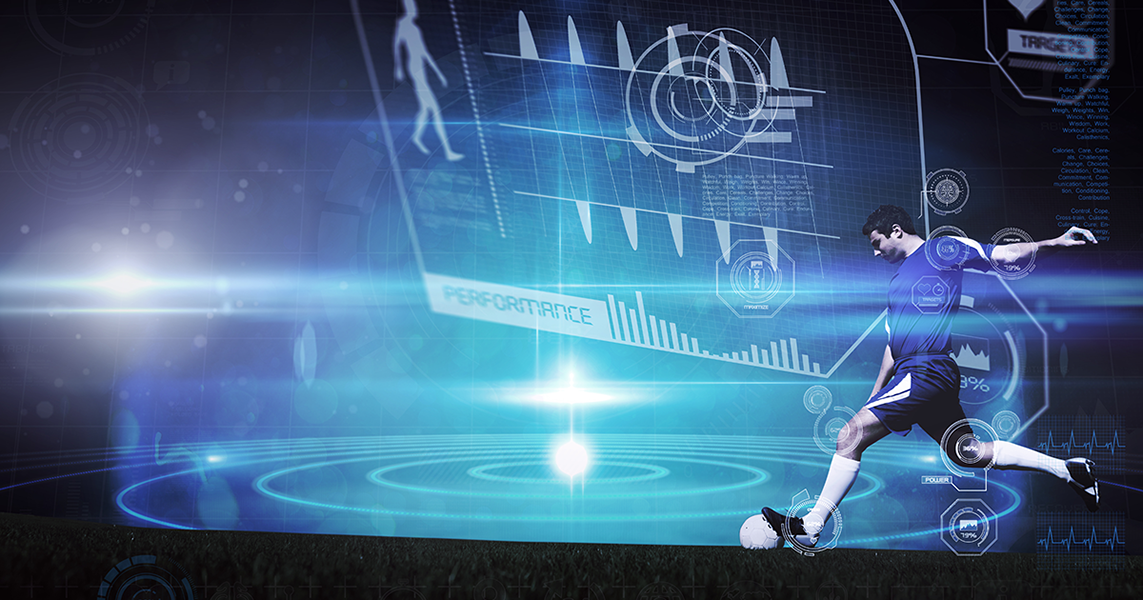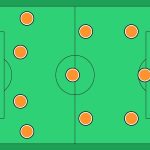Football has always been a game of instincts — coaches reading momentum, players trusting intuition, fans believing in fate. But in the last decade, something remarkable has entered the pitch: artificial intelligence.
From predicting match outcomes to identifying undervalued players and optimizing tactics, AI has quietly reshaped how clubs, analysts, and even bettors understand the world’s most unpredictable sport. The question now isn’t whether machines can predict football — it’s how accurately they can do it, and what that means for the future of the game.
The Data Revolution Behind the Predictions
Every professional football match produces millions of data points — passes, touches, accelerations, distances, heat maps, xG (Expected Goals), pressing sequences, and more. AI systems, powered by machine learning (ML) and deep neural networks (DNNs), digest these vast datasets to recognize patterns invisible to the human eye.
Where traditional statistics stop at numbers, AI goes further — it learns the relationships between those numbers. For instance, it doesn’t just record that a striker took six shots; it analyzes the spatial context, defensive positioning, player fatigue, and previous sequences to determine how those shots might translate into future performance. The result? Predictions that evolve dynamically — not just what happened, but what is likely to happen next.
How AI Predictive Models Actually Work?
At the core of AI match prediction are three major algorithmic frameworks:
| Model Type | How It Works | Key Application in Football |
| Machine Learning (Regression & Classification) | Uses historical data to find correlations and patterns | Predicts outcomes (win/draw/loss), xG, or player performance |
| Neural Networks (Deep Learning) | Simulates how the brain processes data; identifies complex, non-linear interactions | Tactical predictions, pattern recognition (e.g., passing networks) |
| Bayesian Models & Probabilistic Forecasting | Continuously updates probability as new data arrives | In-play betting models, live win probability updates |
The Anatomy of a Football Prediction System
To predict a football match, AI combines quantitative and contextual variables, typically including:
- Team form, fitness levels, and injury reports
- Player ratings and chemistry (synergy metrics)
- Tactical setups (formations, pressing intensity, width, etc.)
- Expected goals for and against (xG / xGA)
- Historical head-to-head performance
- Venue, crowd influence, and even weather conditions
Modern prediction systems like Opta’s Live Probability Model, Stats Perform’s Pressing Index, or Google Cloud’s AI Match Forecasts use ensemble models — combining several algorithms to achieve accuracy levels often exceeding 70–75% for result prediction.
From Numbers to Nuance: How AI “Understands” the Game
The real power of AI lies not in crunching data, but in learning contextual football logic. Machine vision tools now analyze video footage frame by frame, tracking every player’s position and decision.
This allows AI to infer:
- Whether a team is overcommitting in attack;
- How compact or stretched a defense is;
- When fatigue shifts pressing intensity;
- How positional triangles change between halves.
Essentially, AI translates the fluid chaos of a football match into structured, analyzable information — the kind of insight even the best scouts or analysts might miss in real time.
Real-World Examples of AI in Football Predictions
| Organization / Platform | Use Case | Result / Impact |
| Opta / Stats Perform | Predictive modeling and live win probabilities | Used by broadcasters and clubs for tactical visualization |
| Sportradar | Predictive odds modeling for betting markets | Powers real-time updates and “fair odds” calculation |
| Google Cloud x Liverpool FC | Match event prediction and tactical insights | Improved data-driven decision-making for coaching staff |
| SciSports | Player performance forecasting and scouting AI | Helps clubs discover undervalued talent across leagues |
| Zebra Valley Analytics (South Africa) | AI-powered scouting in African leagues | Brings transparency to player evaluation and transfer strategy |
Limitations: Why Football Is Still the Hardest Game to Predict
Despite AI’s brilliance, football remains the most stochastic (random) of all major sports. A single deflection, red card, or missed offside can undo 90 minutes of perfect prediction.
Unlike basketball or baseball — with hundreds of scoring events — football offers very few data-rich outcomes (an average of 2.6 goals per match). This makes sample size and variance enormous factors.AI can model probability, but it can’t predict emotion, pressure, or luck. No algorithm can foresee a penalty miss in the 89th minute — and that’s exactly why football remains magical.
Ethical and Commercial Dimensions
As predictive models improve, ethical and economic questions arise: Who owns the data? How should AI-driven betting models be regulated? Can algorithmic insights give unfair advantages to wealthy clubs? Some leagues, like the Premier League and UEFA, are now considering frameworks for data transparency and competitive fairness, similar to financial fair play — but for analytics. For broadcasters and bookmakers, AI prediction has become a lucrative arms race. For coaches and analysts, it’s a tool for competitive precision — but never a substitute for human intuition.
The Future: Toward “Prescriptive Football”
The next phase isn’t just prediction — it’s prescription. AI will soon tell coaches what they should do next, not merely what might happen. Systems will simulate thousands of tactical scenarios in seconds, suggesting optimal substitutions, defensive adjustments, or set-piece variations. Imagine a world where:
- Clubs use AI simulations to prepare for every opponent style;
- Fans receive personalized “match predictions” via wearable devices;
- Betting platforms update live odds every five seconds based on neural feedback loops.
That future is no longer science fiction — it’s being coded right now in labs from Zurich to Tokyo.
The Human Element: Why AI Will Never Replace the Game
Football, ultimately, is played by humans — emotional, unpredictable, beautifully flawed. AI can reveal probabilities, but not passion. It can quantify effort, but not heart.
The synergy between human intuition and artificial intelligence will define football’s next decade. Just as data didn’t replace scouts — it empowered them — AI won’t replace the game’s human core. It will refine it.
And perhaps, in that balance between precision and unpredictability, football will remain what it always was: a science wrapped in emotion.








Laisser un commentaire